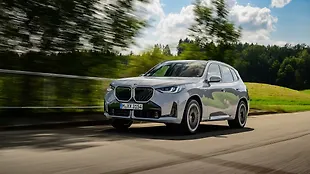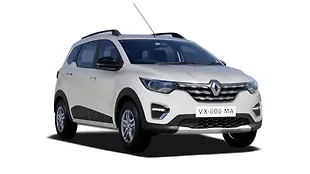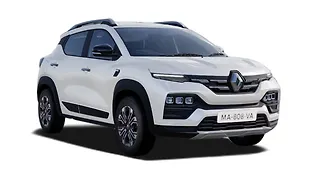Introduction
Here we have the top-of-the-range Tata Punch Creative versus the Renault Kiger RXZ, two standout urban vehicles which blur the line between a city car and a compact SUV. The Punch is unarguably more popular but then this naturally aspirated version of the Kiger is brilliant value. Technically both are ‘compact’ offerings but neither is short on comfort and usability. So, which is the better compact car to suit your daily needs? Let’s get straight to it.

Dimensions

The Kiger is a fair bit longer and wider than the Punch and it has a wheelbase advantage, too. Naturally that means more space in the cabin, specifically in the rear, right? More on that later. Let’s delve into the looks for now. Both are city-friendly for size and not at all intimidating to drive and park in challenging conditions.
| Parameters | Tata Punch | Renault Kiger |
| Length | 3827mm | 3991mm |
| Width | 1742mm | 1754mm |
| Height | 1615mm | 1605mm |
| Wheelbase | 2445mm | 2500mm |
Of the two, it’s the Punch that shows off its SUV intentions more vividly with its slightly taller and upright stance, lots of cladding all-around and the Harrier-inspired front-end. The Kiger, meanwhile, has a squat body look to it and in profile, it appears far more raked. The Kiger’s lighting upfront is all LEDs whereas the Punch has LEDs for daytime running lights and a halogen setup for everything else – projector for low beam and the bulb next to it for high beam.
Infotainment System and Features

Both come with a touchscreen infotainment system featuring smartphone mirroring tech that you would expect - Android Auto and Apple CarPlay. However, there are key differences in how they operate. For instance, the Kiger’s system is simple to use and has a crisper display, whereas the one in the Punch is a little tricky – it houses more menus and functions, sure, but the music input controls and switching between screens is fiddly and requires getting used to. That said, the Harman sourced audio system in the Punch sounds noticeably richer at mid to high volume than the Arkamys system in the Kiger.

Overall, the Kiger gets you more for your money. Things like full LED lighting, wireless charging, four airbags, driving modes, a fully digital instrument cluster, rear AC vents and ambient lighting. As for the Punch, it gets driver and passenger airbag, two driving modes (Eco and City), part-digital instrumentation, 90-degree opening doors and a more comprehensive connected car tech which also recognizes Hinglish (Hindi + English) commands.
Space and comfort

The real struggle of delivering big car-like space and comfort into a sub-four meter footprint is found in its packaging. If you are looking for a city car and you are okay with its cabin being on the more compact side, the Punch is the one to go for. The Kiger though, puts up a stronger case when it comes to outright space and practicality, with its larger boot and more space at the rear.

The space in the back of the Kiger is better in terms of knee room and head room, both of which are a touch tighter in the Punch. Don’t get me wrong, it’s not like the second row in the Punch is cramped, it’s just that the entire car is narrower and shorter than the Renault and that is reflected as soon as you sit in the back seat.

Though it’s not all bad news because there are things that the Tata excels at – the rear bench is not only more supportive, but is also set at a good height and you get a view out because of the large windows. By comparison, you sit noticeably lower in the Kiger and because the window line is so high, the glasshouse is much narrower and as a result, you end up feeling more confined despite there being physically more space at your disposal.

Up front, there are quite a few interesting looking trim and design elements in the Kiger. Things like the all-digital instrument cluster, rotary dials (each operating with a nice click) for the climate control, keyboard like press action for the hazard light and door lock/unlock switches, ambient lighting, and two glove boxes make it the more interesting cabin here for sure. The Punch’s cabin looks relatively simple with a more straight forward design though we must add that the plastics in here feel less scratchy and also, overall there is slightly more weight to all the control stalks and buttons/knobs which is a good thing.

The difference in boot space between the two is substantial. As per our measurements, the Punch has 385-litres of boot volume whereas the Kiger’s is a lot more capacious at 460-litres. So, if boot space matters to you, the Kiger would be a better bet. For space and comfort, we have to give the win to the Kiger for its superior space, practicality (you get 60:40 split for the bench seat, rear AC vents) and boot capacity but it’s worth mentioning that the Punch does surprisingly well in terms of rear seat comfort.
Performance

The naturally aspirated Kiger and the Punch aren’t horsepower heroes and ideally you wouldn’t be considering either as a fun vehicle, but for pure A to B drives within the city with occasional highway runs, both offer sufficient pulling power. The 1.2-litre engine in the Punch makes 86bhp/113Nm and its power advantage on paper is one thing, but when it comes to real world performance, it’s a different story. The Kiger is down on power (72bhp/96Nm) but because it’s 80 kilos lighter than the Punch, it’s peppier at city speeds. It responds with a little more zest in the urban setting – it gets away from standstill cleanly and that’s despite the excessively sharp bite point from the clutch and the imprecise gearshift action at low speeds. The Kiger’s drivetrain also lacks refinement when compared to the Punch and that is frankly disappointing because otherwise the engine itself pulls along nicely. How nicely? It completed the 20-80kmph sprint in third gear in 11.90 seconds and 40-100kmph in fourth in 19.80 seconds. The Punch, on the other hand, recorded slightly slower times at 12.65 and 19.32 seconds respectively.
The Punch’s power delivery off the mark isn’t quite as impressive – it’s lethargic and feels almost breathless below 3,000rpm. I found myself keeping the revs higher than I would ideally like, just to keep up with traffic. Thankfully, the clutch action is extremely light, to the point where it feels like the pedal isn’t connected to anything and although this lightness does rob you off some pedal feel, I suspect it’s bound to be appreciated by many users. Now, although the Kiger is quicker flat-out and in-gear up until 100kmph (13.59 seconds to 100kmph as against 14.07 seconds in the Punch), the gap between the two gets much narrower at highway speeds and it’s because of that one-litre engine’s lack of top-end zing – there is simply no point revving the Kiger past 5,000rpm because it’s all racket and no buildup at that point. In the end it’s a close battle, with the Kiger scoring more on outright performance and drivability whereas the Punch is more refined and offers superior gearshift and clutch action.
Ride Quality

The ride on the Kiger has always been on the firm side and the feeling is only amplified when you sample it along with the Punch. Even though it’s settled for the most part it tends to knock over sharp bumps occasionally. Switch to the Punch and you wouldn’t need more than a kilometer or two to notice the extra suppleness its ride has to offer. The ride quality is actually borderline plush and more absorbent than the Kiger, with a nice, soft edge over rippled surfaces. Like most Tata vehicles, the Punch deals with high frequency bumps nicely and even if you hit larger than average-sized potholes they don’t transmit into the cabin. Things improve on the Kiger at highway speeds – the ride gets noticeably flatter and there’s less lateral movement than the Punch but it’s also not as refined as the Punch. There’s more of engine, road and wind noise, so overall, it’s the Punch that fights back hard and takes the win for ride quality.

Fuel Efficiency
Both fared well in our fuel efficiency tests, but it’s the Kiger that managed to Go the extra mile. It returned an impressive 14.39kmpl in the city and 18.63kmpl on the highway. Predictably, the heavier Punch couldn’t match the figures but it delivered 13.25 and 18.44kmpl respectively which isn’t bad at all. We found the engine start-stop feature on the Punch to be quite useful while testing its city efficiency though it’s worth adding that it’s quite insistent towards shutting the engine as soon as you come to a halt and put the car in neutral. Also, it would fire up the engine anywhere between 30 seconds to a minute of being stationary, especially in the afternoon heat.
Verdict and Scores
2nd
Tata Punch Creative MT
Final score: 355/600
Price: Rs 10.26 lakh, on-road, Mumbai

It’s the end of this test and the decision that you make could well be based on your priorities or more simply, requirements. We get it. Ultimately, the Tata Punch finishes a close second. It isn’t as peppy as the Kiger when it comes to performance and drivability, more so with a full load. So if you are not too fussy about acceleration or driving fun and just want a comfortable city car that rides well then the Punch could be your pick and we would totally understand why. However, there is no denying that it’s a little pricey and yet it falls short on equipment and that’s what really takes the game away from this little Tata.
1st
Renault Kiger RXZ
Final score: 363/600
Price: Rs 9.71 lakh, on-road, Mumbai

Our aim with this test was to find the better all-rounder urban vehicle that’s high on value, and it’s the Renault Kiger which has come on top. Its drivetrain may not be as refined and the cabin plastics may feel extra scratchy and hard but the Kiger turns the table in key areas such as performance, space, boot capacity, features and fuel efficiency. Most of all, it’s the naturally aspirated Kiger’s value proposition that may seal the deal for many buyers. Below this text we have included the full scores for the Kiger and the Punch against our testing criteria, which should help you get a clear idea of our rationale for this verdict.
Pictures by Kapil Angane
Specifications
| CAR NAME | Tata Punch | Renault Kiger |
| Variant | Creative iRA | RXZ |
| ENGINE | ||
| Fuel | Petrol | Petrol |
| Displacement | 3 cylinders, 1,199cc | 3 cylinders, 999cc |
| Power | 86bhp @ 6,000 rpm | 68.87bhp @ 6,250 rpm |
| Torque | 113Nm @ 3,300 rpm | 96Nm @ 3,500 rpm |
| Power to weight | 90.3bhp per tonne | 112.12bhp per tonne |
| Torque to weight | 118.65Nm per tonne | 93.12Nm per tonne |
| Gearbox | 5-speed MT | 5-speed MT |
| CHASSIS & BODY | ||
| Kerb weight (measured) | 1,050kg | 970kg |
| Tyres | 195/60 R16 | 195/60 R16 |
| Spare | Full-size | Full-size |
| STEERING | ||
| Type | Rack and pinion | Rack and pinion |
| Type of assist | Electric | Electric |
| Turning circle | 10 | 9.8 |
| BRAKES | ||
| Front | Discs | Discs |
| Rear | Drums | Drums |
| ABS | Yes | Yes |
Test Data
| CAR NAME | Tata Punch | Renault Kiger |
| Variant | Creative 1.2-litre NA | RXZ 1-litre NA |
| PERFORMANCE & BRAKING | ||
| 0-20kmph | 1.11s | 1.15s |
| 0-40kmph | 3.21s | 2.87s |
| 0-60kmph | 5.95s | 5.17s |
| 0-80kmph | 9.07s | 8.99s |
| 0-100kmph | 14.07s | 13.59s |
| 0-120kmph | - | - |
| 20-80kmph | 12.65s | 11.90s |
| 40-100kmph | 19.32s | 18.80s |
| 100-0kmph | 48.8m at 3.75 secs | 46m at 3.36 secs |
| FUEL ECONOMY | ||
| City | 13.25kmpl | 14.39kmpl |
| Highway | 18.44kmpl | 18.63kmpl |
| Tank size | 37litres | 40litres |
| Range | 500.95 km | 567.25 km |
| INTERIOR MEASUREMENTS | ||
| Front | ||
| Legroom(Max/min) | 870/530mm | 850/620mm |
| Headroom(Max/min) | 1000/950mm | 970/920mm |
| Shoulder room | 1270mm | 1250mm |
| Backrest height | 620mm | 630mm |
| Rear | ||
| Legroom(Max/min) | 890/580mm | 920/680mm |
| Ideal legroom | 630mm | 685mm |
| Headroom | 940mm | 950mm |
| Shoulder room | 1320mm | 1300mm |
| Seat base length | 470mm | 460mm |
| Backrest height | 620mm | 610mm |
| Boot | ||
| Length/width/height | 660/1030/640mm | 750/1070/630mm |
| Loading lip height | 790mm | 820mm |
Scores
| Parameters | Max points | Tata Punch | Renault Kiger |
| DRIVING FEEL | |||
| Steering response | 20 | 12 | 13 |
| Throttle response | 25 | 12 | 14 |
| Brake response | 25 | 15 | 15 |
| Gearshift response | 20 | 13 | 12 |
| Visibility | 10 | 7 | 7 |
| Intermediate results | 100 | 59 | 61 |
| SPACE | |||
| Front Space | 25 | 13 | 12 |
| Rear space | 25 | 11 | 12 |
| Feeling of space | 20 | 13 | 13 |
| Boot space/flexibility | 20 | 9 | 13 |
| Rear seat ingress | 20 | 15 | 15 |
| Intermediate results | 110 | 63 | 65 |
| IN THE CABIN | |||
| Comfort equipment | 30 | 10 | 10 |
| Operability | 20 | 11 | 12 |
| Feel of quality | 20 | 12 | 12 |
| Intermediate results | 70 | 33 | 34 |
| PERFORMANCE | |||
| Acceleration | 25 | 14 | 15 |
| Engine characteristics | 20 | 12 | 12 |
| Driveability | 30 | 20 | 21 |
| Braking | 25 | 20 | 21 |
| Fuel efficiency | 35 | 32 | 33 |
| Intermediate results | 135 | 98 | 102 |
| ROAD MANNERS | |||
| Ride quality | 30 | 20 | 18 |
| Directional stability | 20 | 11 | 10 |
| Handling | 20 | 10 | 10 |
| Manoeuvrability | 20 | 11 | 11 |
| Safety | 20 | 2 | 3 |
| Intermediate results | 110 | 54 | 53 |
| PRICE | |||
| Price | 45 | 28 | 30 |
| Resale | 10 | 6 | 5 |
| Warranty | 10 | 6 | 5.5 |
| Service cost calculator | 10 | 5 | 5 |
| Intermediate results | 75 | 45 | 46 |
| Total | 600 | 355 | 363 |

![Renault Kiger [2022-2023] Image Renault Kiger [2022-2023] Image](https://imgd.aeplcdn.com/272x153/n/cw/ec/115135/kiger-exterior-right-front-three-quarter-4.jpeg?isig=0&q=80)

























